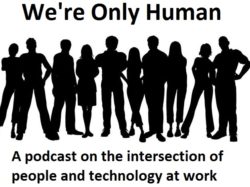When I am teaching a class to prepare students for the PHR/SPHR exams, one of the things I repeatedly highlight is the need to tie HR practices back to business objectives. If we only see ourselves and our actions within the “bubble” of HR, then we severely limit the impact and value we can deliver to the business.
One method for bringing the value to the business is by evaluating the financial cost and determining the return or value of a specific program. I know, I know, this involves people, which makes it notoriously difficult to measure. But you don’t have to get crazy about it. There are ways to pull it off.
Measuring Value
I have a friend that works for a company that does satellite mapping. One of the company’s ongoing projects involves supporting large retailers. The satellites take periodic photos of the retailers’ parking lots, and the extent to which the lots are filled with vehicles is used to predict sales for the quarter.
I don’t expect any of us to go to that level to measure the impact of HR programs. :-)
However, the ability to determine a full ROI requires thinking outside the box a bit. We need to be able to take a big picture view so that we can truly evaluate the impacts on the business. In talking with HR leaders at organizations both large and small, the best way to explain this is through a good use case. I read about the example below from Patagonia and knew I needed to share it here.
Patagonia Case Study: On-Site Child Care

Check out the data below, emphasis mine on the key data point.
Because child care benefits are an important recruitment and retention driver for working parents, one-quarter of organizations (26%) allowed employees to bring their children to work in a child care emergency. Although this benefit has remained consistent since 2013, it decreased significantly from 32% in 2012. On the other hand, there has been an increase over the past year in the percentage of organizations offering a child care referral service, from 9% to 16%, and 2% allowed parents to bring their babies under the age of 1 to work on a regular basis.
The above-mentioned benefits, which help the employee at a minimal cost to the organization, were more commonly offered than costlier benefits such as access to backup child care services (3%), subsidized child care program (4%) and nonsubsidized child care center (3%). The least common child care benefits are becoming even scarcer. The prevalence of subsidized child care centers (2%) decreased from 4% in 2012 and 9% in 1996, and consortium child care centers went from 1% in 2012 to just a fraction of a percent.
Source: 2016 SHRM Benefits Study
The use of company child care centers is dropping. I believe this is due in part to the difficulty of showing an ROI on these programs. In many cases, HR leaders are not trained or equipped to prove the value of certain benefits, like these, and they go on the chopping block any time there are budgetary constraints that affect the offerings companies can deliver.
Bucking the trend, Patagonia is not only providing on-site child care, but it plans to expand the coverage to even more employees in the coming year.
To support our families, Patagonia provides company-paid health care and sick time for all employees; paid maternity and paternity leave; access to on-site child care for employees at our headquarters in Ventura, California, and at our Reno, Nevada, distribution center; and financial support to those who need it, among other benefits. In particular, offering on-site child care, we believe, is the right thing to do for employees, working parents, and the life of the workplace.
However, a reasonable businessperson might ask, “What does it cost?” It's expensive if you offer high-quality care and subsidize your employees' tuition—but not as expensive as you'd think.
Source: Fast Company
This is where the conversation gets interesting. In the article, the CEO of Patagonia explains the wide variety of ways the program’s costs are recouped for providing child care support:
- Tax benefits: 50%
- Employee retention: 30%
- Employee engagement: 11%
- Total recouped cost: 91%
But that just takes hard costs into consideration, not even bothering with any other elements that might be possible to tie in. And it might be undershooting the mark in terms of overall returns.
We're not alone. JPMorgan Chase Bank, N.A., has estimated returns of 115% for its child-care program; global business consultant KPMG found that its clients earned a return on investment (ROI) of 125%.
There were two statistics from the conversation that I particularly liked, because they help to illustrate the true value of this kind of program.
1. For the past five years, Patagonia has seen 100% of moms return to work after maternity leave.
This is incredibly rare. I don’t have any stats to back it up, but I’d say a sizable portion of the “new mom” segment is still choosing to stay home with the baby instead of going back to work. Companies lose a lot of great talent by not having policies and philosophies that support this critical segment of the population.
2. For the past five years, turnover among Patagonia employees who use its child care program is 25% lower than in its overall workforce.
This was wrapped into the “retention” calculations above, but it’s still a great reminder. When HR pros look at turnover data, it’s often cut by tenure, job, manager, and other similar factors. What about looking at it by benefits, as Patagonia has done? By seeing the impact of this kind of program on the bottom line in terms of employee retention, it becomes an even more valuable asset to the company for recruiting and ongoing engagement.
Statistically only two of you reading this out of every hundred people are actually going to be working at a company with on-site childcare, so that’s a narrow conversation. But I want you to think about how Patagonia is able to tie the value of its program back to various pieces of the business–you can do this with your own leave programs, benefits, perks, etc.
Break out the spreadsheet. Dig into the data. Prove the value.
Does your company have a benefit that is special to the employees? Do you know what impact, if any, it has on the employee population or the bottom line?Â
 As someone who has worked in the HR profession, I know well the full value of stories, examples, and case studies. At the end of the day, practitioners like us wanted to know that we weren’t the only ones facing a problem and that, just maybe, some other organization had already surmounted the issue with some measure of success that we could learn from.
As someone who has worked in the HR profession, I know well the full value of stories, examples, and case studies. At the end of the day, practitioners like us wanted to know that we weren’t the only ones facing a problem and that, just maybe, some other organization had already surmounted the issue with some measure of success that we could learn from.


 In the latest episode of We’re Only Human, I explore talent mobility and its applications in the workplace. Talent mobility is the practice of using internal talent to fill temporary or permanent roles.
In the latest episode of We’re Only Human, I explore talent mobility and its applications in the workplace. Talent mobility is the practice of using internal talent to fill temporary or permanent roles.